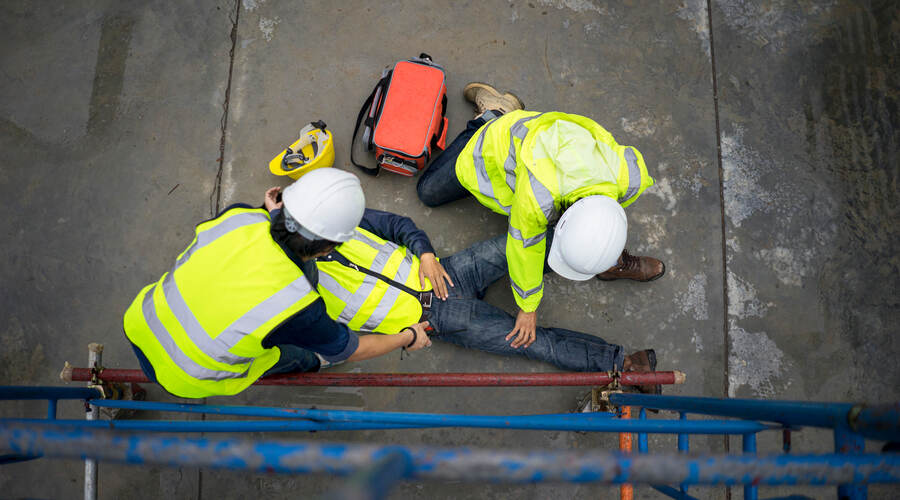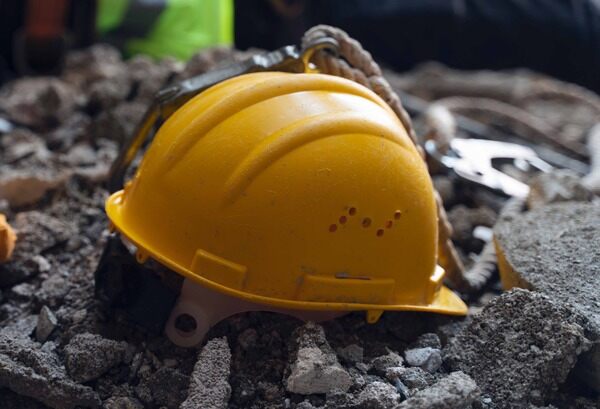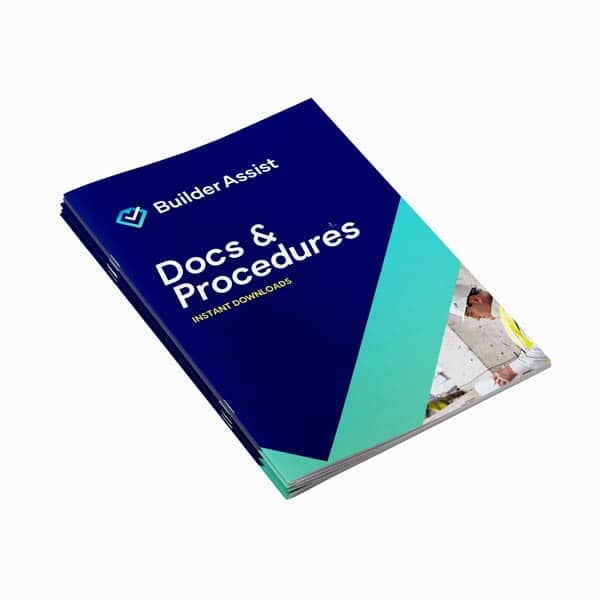
A Comprehensive Guide for Construction Pros
In the construction industry, understanding notifiable incidents is not just a legal requirement—it's a critical aspect of maintaining a safe and secure work environment.
From legal obligations to reporting processes, we explore the impact of a notifiable incident on workplace safety.

From immediate response measures to comprehensive reporting protocols, addressing a notifiable incident is a shared responsibility. Embracing a proactive approach to safety, not only ensures compliance with regulatory standards, but also supports the workplace for continuous improvement.
What is a Notifiable Incident?
A notifiable incident in construction refers to a serious occurrence that triggers legal reporting obligations. This can include:
- The fatality of an individual
- A 'serious injury or illness'
- A 'dangerous incident' that exposes someone to a significant risk, irrespective of whether injuries occur.
Notifiable incidents can involve any individual, including employees, contractors, or members of the public.
As construction professionals, being well-versed in the legal requirements surrounding notifiable incidents is crucial. This includes, when and how to report, and the specific obligations imposed by relevant occupational health and safety legislation in your jurisdiction.
Reporting Processes
Understanding and complying with reporting processes is paramount once a notifiable incident occurs. Accurate and timely reporting not only ensures legal compliance, but facilitates a swift and effective response to mitigate further risks.
The correct WHS incident reporting procedure can depend on the State you operate in. In addition, it can depend on specific regulations in place, and the nature of the incident. However, here's a general outline of the steps you might follow to report a notifiable incident:
- Secure the scene.
- Provide medical assistance.
- Collect information (including, but not limited to date, time, location, names and contact information of individuals involved).
- Take photographs.
- Interview witnesses.
- Involve Health and Safety Representatives.
- Use Incident report forms.
- Describe the injuries or damages.
- Include pre-existing conditions.
- Outline immediate actions taken.
- File and store documentation.
- Reporting - based on your jurisdiction's regulations and internal procedures, report the incident to the relevant authorities.
For a more detailed description of WHS incident reporting procedures, take a look at our blog “WHS Incident Reporting Procedure for construction”.
Who is responsible for reporting a notifiable incident that occurs on a construction site?
In Australia, Work Health and Safety (WHS) legislation places specific responsibilities on duty holders involved in construction projects. This includes the Person Conducting a Business or Undertaking (PCBU), the principal contractor, and safety officers.
Person Conducting a Business or Undertaking (PCBU):
The PCBU in a construction project has a primary duty of care to ensure the health and safety of workers and others affected by the work. Regarding reporting notifiable incidents:
- Legal Obligations: The PCBU is legally obligated to report notifiable incidents as defined by WHS legislation.
- Notification Process: The PCBU is responsible for promptly notifying the relevant health and safety regulatory authority of any notifiable incidents. This notification typically involves submitting a detailed incident report.
- Cooperation with Authorities: The PCBU is expected to cooperate with the health and safety regulatory authority during their investigation of the incident.
Principal Contractor
The principal contractor is a key party in managing safety on construction sites. Their responsibilities include:
- Coordination of Safety: The principal contractor is responsible for coordinating work to ensure that health and safety risks are effectively managed.
- Incident Reporting: Similar to the PCBU, the principal contractor has a duty to report notifiable incidents. They play a crucial role in facilitating the reporting process and ensuring that all relevant information is captured.
- Cooperation with Authorities: In the event of a notifiable incident, the principal contractor is expected to cooperate with health and safety regulatory authorities during investigations.
Safety Officer
The safety officer, often designated by the PCBU or principal contractor, is focused on monitoring and promoting health and safety within the workplace. Their role in reporting notifiable incidents includes:
- Investigation Support: Safety officers may play a direct role in investigating notifiable incidents. They gather information, interview witnesses, and contribute to the analysis of the incident.
- Documentation: Safety officers are involved in documenting notifiable incidents thoroughly. This includes recording details of the incident, the response taken, and any recommendations for preventing similar incidents in the future.
- Communication: Safety officers may communicate with regulatory authorities, workers, and management to ensure a transparent flow of information regarding the incident.
It's essential for all parties involved in a construction project to understand their specific roles and responsibilities regarding notifiable incidents. Additionally, staying updated on relevant WHS regulations and guidelines is crucial to ensure compliance with the law. As WHS regulations may vary by jurisdiction, it is advisable to consult the specific legislation applicable to the construction site in question.
What is the impact of notifiable incidents on construction workplace safety?
Notifiable incidents can have significant and far-reaching impacts on workplace safety. Understanding and addressing these impacts are crucial to create a safe and healthy work environment. Here are key aspects to consider:
Immediate Safety Concerns
Immediate safety concerns arise because these incidents often involve serious injuries, fatalities, or dangerous occurrences. This may necessitate swift medical attention and emergency response. The primary focus, in these situations, is on addressing the immediate safety needs of the affected individuals. Subsequently, activating emergency protocols, and implementing first aid measures to minimise harm also become a priority.
Worksite Morale and Well-being
The consequences of a notifiable incident can extend beyond the immediate aftermath of the incident. Witnessing or being involved in a notifiable incident can have a profound emotional and psychological impact on workers. This can affect worksite morale and overall well-being. Subsequently, the importance of addressing the mental health aspects of workplace safety becomes paramount. Employers need to provide counselling, support services, and foster an open communication environment to mitigate the emotional impact on the workforce.
Legal and Regulatory Repercussions
From a regulatory perspective, notifiable incidents trigger legal reporting obligations under Work Health and Safety (WHS) regulations. Therefore, failure to comply with reporting requirements may result in legal consequences, fines, and penalties. Employers and duty holders must be aware of, and adhere to reporting obligations. This is because regulatory authorities may conduct investigations to determine compliance, potentially leading to legal consequences for non-compliance.
Reputation Damage
The impact on reputation of notifiable incidents is another significant consideration. This type of incident can tarnish the reputation of the construction company, with stakeholders, clients, and the public. They may view the event as a reflection of the company's commitment to safety. Rebuilding trust and reputation becomes crucial for the company's long-term success, requiring transparent communication, corrective actions, and a demonstrated commitment to improving safety practices.
Operational Disruption
Operational disruption is an additional consequence. Investigations and corrective actions following a notifiable incident can disrupt normal operations. In addition, worksite shutdowns may occur, impacting project timelines and deadlines. Employers need contingency plans in place to address operational disruptions. This should be communicated effectively with project stakeholders to manage expectations and minimise the impact on project delivery.
Learning Opportunities for Improvement
Notifiable incidents also present learning opportunities for improvement in safety practices. Identifying the root cause of an incident helps implement corrective actions to prevent future occurrences. Employers should embrace a proactive approach to learn from incidents. In doing so, project leads can implement changes in safety protocols, training programs, and risk management strategies to enhance overall workplace safety. Subsequently, construction companies contribute to creating a safe and healthy work environment for their employees.
Understanding and effectively managing notifiable incidents are paramount for ensuring the safety and well-being of all personnel involved. From immediate response measures to comprehensive reporting protocols, addressing notifiable incidents is a shared responsibility that spans across all levels of the construction process. Embracing a proactive approach to safety not only ensures compliance with regulatory standards, but also supports the workplace for continuous improvement. Most importantly, safeguarding individuals becomes a fundamental priority.
If you're currently getting your business ready for site safety compliance and require a template for WHS incident reporting procedures (including notifiable incidents), you can find them included in our Builder Assist Safety Management Plans. For an immediate download, visit our Safety Management Plans page for a trade-specific template.

Safety Management Plans (WHS)
Specifically designed for each trade starting up a business, these Work Health Safety Management Plans or WHS Management Plans, provide support with the management of Work Health & Safety in the workplace. Also referred to as Occupational Health & Safety (OH&S) the material provided in this section will assist with WHS/OHS management and training requirements for the workplace.


